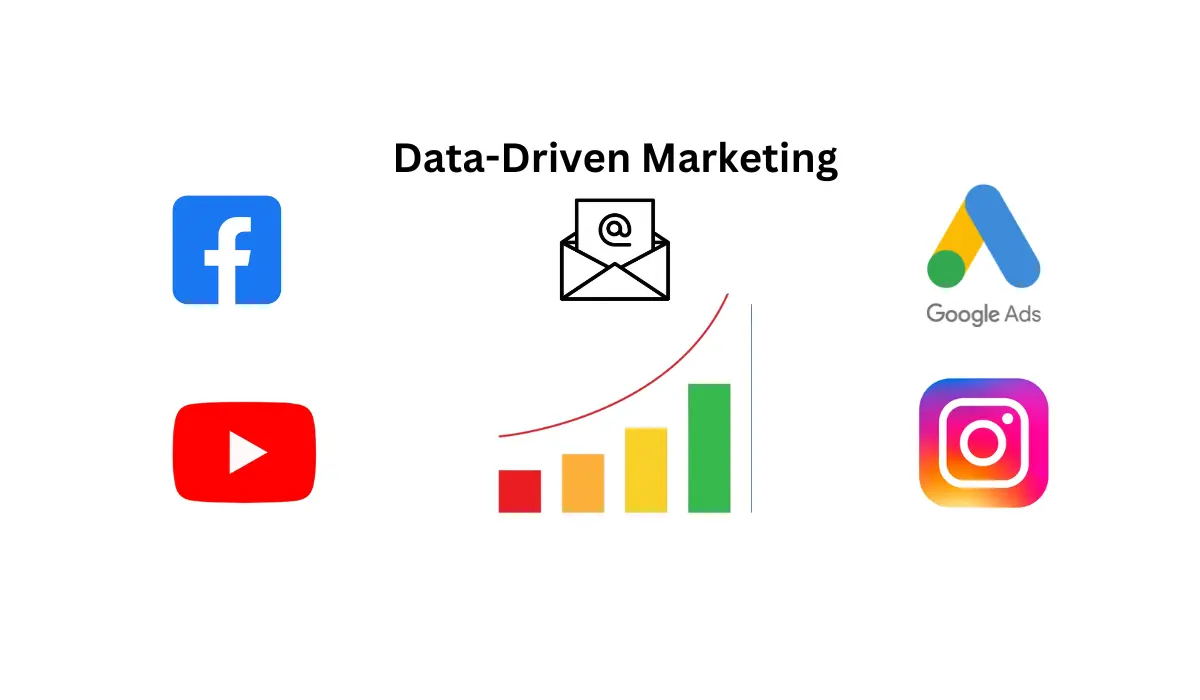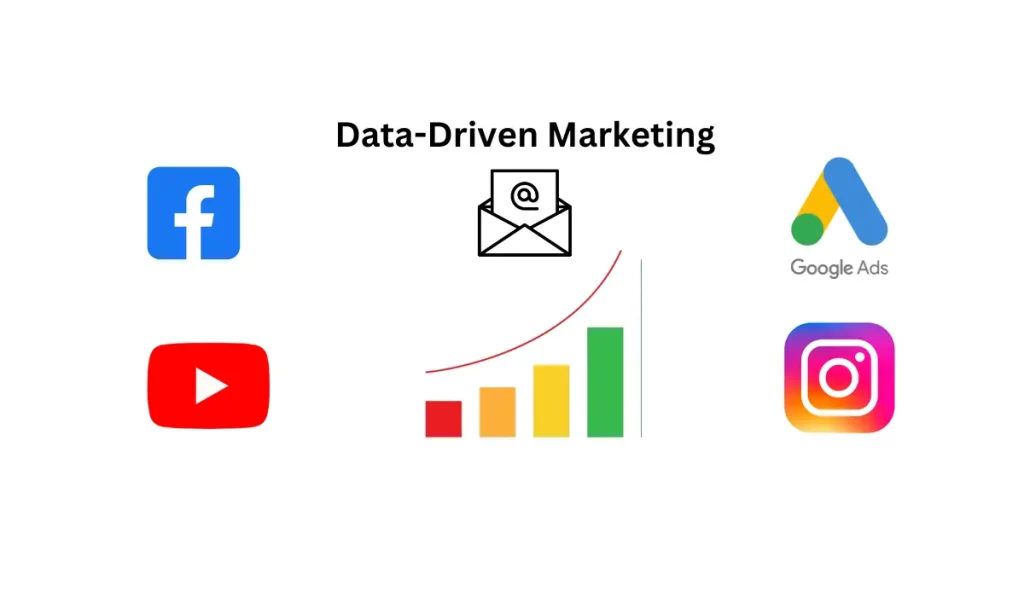In today’s digital landscape, data-driven marketing has emerged as a powerful strategy for businesses to enhance their marketing efforts and drive meaningful results. By harnessing the wealth of data available through various channels and leveraging advanced analytics tools, marketers can gain valuable insights into customer behavior, preferences, and trends. This article explores the concept of data-driven marketing and how businesses can effectively leverage analytics to create targeted campaigns that resonate with their audience.
Understanding Data-Driven Marketing
Data-driven marketing refers to the practice of using data and analytics to inform marketing strategies and decision-making processes. Rather than relying solely on intuition or assumptions, data-driven marketers rely on empirical evidence and quantitative analysis to identify opportunities, optimize campaigns, and measure performance. This approach enables marketers to better understand their audience, personalize messaging, and deliver relevant content across various channels.
Importance of Data-Driven Marketing
data-driven marketing is not just a trend but a fundamental aspect of modern business strategy. By harnessing the power of data, businesses can gain a deeper understanding of their customers, personalize their marketing efforts, optimize their strategies, and ultimately, drive sustainable growth and success in today’s dynamic marketplace.
Understanding Customer Behavior:
Data-driven marketing allows businesses to gain deep insights into customer behavior, preferences, and trends. By analyzing data from various sources such as website interactions, social media engagement, and purchase history, businesses can understand their audience better and tailor their marketing efforts accordingly.
Personalization:
With the abundance of data available, businesses can personalize marketing messages and experiences for individual customers. Personalized marketing campaigns are more relevant and engaging, leading to higher conversion rates, increased customer satisfaction, and ultimately, improved loyalty and retention.
Optimizing Marketing Strategies:
Data-driven marketing enables businesses to continuously monitor and optimize their marketing strategies in real-time. By tracking key performance indicators (KPIs) and analyzing campaign performance, businesses can identify what’s working well and what needs improvement, allowing for more effective allocation of resources and budget.
Targeted Advertising:
Data-driven marketing enables businesses to target their advertising efforts more effectively. By leveraging demographic data, browsing behavior, and other contextual information, businesses can deliver targeted ads to specific audience segments, resulting in higher engagement and conversion rates.
Measurable Results:
Unlike traditional marketing approaches, data-driven marketing provides measurable and quantifiable results. Businesses can track metrics such as conversion rates, click-through rates, and return on investment (ROI), allowing them to assess the effectiveness of their marketing efforts and make data-driven decisions to optimize future campaigns.
Competitive Advantage:
In today’s competitive landscape, businesses that embrace data-driven marketing gain a significant competitive advantage. By leveraging data to make informed decisions, businesses can stay ahead of the curve, anticipate market shifts, and respond quickly to changing consumer needs and preferences.
Cost Efficiency:
Data-driven marketing allows businesses to optimize their marketing spend by targeting the right audience with the right message at the right time. By reducing wasteful spending on ineffective tactics and channels, businesses can achieve higher ROI and maximize their marketing budget.
Innovation and Adaptation:
Data-driven marketing fosters a culture of innovation and adaptation within organizations. By continuously experimenting, analyzing data, and iterating on their strategies, businesses can stay agile and responsive to market dynamics, driving ongoing growth and success.
Tips to Do Targeted Campaign With Analytical Data
Targeted campaigns are essential for reaching the right audience with the right message at the right time. Here are some tips for executing targeted campaigns using analytical data:
Define Your Target Audience:
Utilize analytical data to segment your audience based on demographics, behaviors, interests, and other relevant criteria. By understanding who your audience is, you can tailor your campaigns to resonate with specific segments.
Data Collection and Integration:
Gather data from various sources such as website analytics, CRM systems, social media platforms, and third-party data providers. Integrate this data to create a comprehensive view of your audience and their interactions with your brand.
Create Buyer Personas:
Develop detailed buyer personas based on your audience segments. These personas should represent typical customers within each segment, including their needs, pain points, preferences, and behaviors. Use analytical data to validate and refine these personas over time.
Personalize Content:
Leverage analytical data to personalize your marketing content and messaging for different audience segments. Tailor your email campaigns, ad creatives, website content, and other marketing materials to address the specific interests and needs of each segment.
Optimize Channel Selection:
Analyze data to identify which channels and touchpoints your audience prefers and engages with the most. Focus your marketing efforts on these channels to maximize reach and effectiveness. For example, if your audience spends a lot of time on social media, prioritize social media advertising and engagement.
Implement Dynamic Content:
Use dynamic content capabilities to deliver personalized experiences to individual users within your target segments. Dynamic content allows you to automatically customize content based on user attributes, behaviors, and preferences, increasing relevance and engagement.
A/B Testing:
Experiment with different messaging, offers, and creative elements to optimize campaign performance. Use A/B testing to compare variations of your campaigns and determine which ones resonate best with your target audience. Analyze the results to refine your approach and improve future campaigns.
Optimize Timing:
Use analytical data to identify the optimal timing for delivering your marketing messages. Consider factors such as time of day, day of the week, and seasonality to ensure that your campaigns reach your audience when they are most likely to be receptive.
Monitor and Measure Results:
Continuously monitor the performance of your targeted campaigns using relevant metrics and KPIs. Analyze key performance indicators such as conversion rates, click-through rates, engagement metrics, and ROI to evaluate the effectiveness of your campaigns. Use this data to iterate and optimize your targeting strategies over time.
Stay Compliant with Data Regulations:
Ensure that you comply with data privacy regulations such as GDPR and CCPA when collecting, storing, and using analytical data for targeted campaigns. Obtain explicit consent from users for data collection and processing, and implement robust security measures to protect customer data.
Also Read
Leveraging Data Analytics for Insights
One of the key components of data-driven marketing is the use of data analytics tools to extract insights from large volumes of data. These tools can range from basic web analytics platforms like Google Analytics to more advanced customer relationship management (CRM) systems and predictive analytics software. By analyzing data related to website traffic, social media engagement, email interactions, and customer transactions, marketers can uncover patterns, trends, and correlations that inform their marketing strategies.
Personalization and Targeting
One of the most significant benefits of data-driven marketing is the ability to personalize marketing messages and target specific audience segments with relevant content. By leveraging demographic data, browsing behavior, purchase history, and other contextual information, marketers can create highly targeted campaigns that resonate with individual customers. Personalization not only improves the effectiveness of marketing efforts but also enhances the customer experience and fosters brand loyalty.
Optimizing Campaign Performance
Data-driven marketing enables marketers to continuously monitor and optimize campaign performance in real-time. By tracking key performance indicators (KPIs) such as conversion rates, click-through rates, and return on investment (ROI), marketers can identify areas for improvement and make data-driven adjustments to their campaigns. Whether it’s refining ad targeting parameters, A/B testing different messaging variants, or optimizing landing pages for better conversion, data analytics empowers marketers to iterate and optimize their strategies for maximum impact.
Predictive Analytics for Future Success
In addition to analyzing historical data, data-driven marketers can also leverage predictive analytics to anticipate future trends and behaviors. By applying statistical models and machine learning algorithms to historical data sets, marketers can forecast customer preferences, predict future demand, and identify growth opportunities. Predictive analytics enables marketers to stay ahead of the curve, anticipate market shifts, and proactively adjust their strategies to capitalize on emerging trends.
Conclusion
Data-driven marketing has transformed the way businesses approach marketing, enabling them to gain deeper insights into customer behavior, personalize messaging, and optimize campaign performance. By leveraging data analytics tools and techniques, marketers can create targeted campaigns that resonate with their audience, drive engagement, and ultimately, deliver measurable results. In an increasingly competitive and data-driven marketplace, embracing data-driven marketing is no longer optional but essential for staying ahead of the curve and achieving long-term success.





